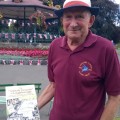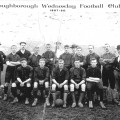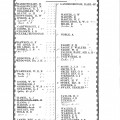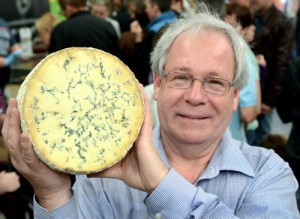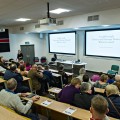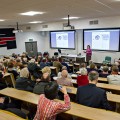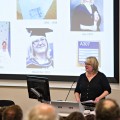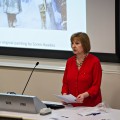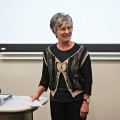Nichol’s History of Leicestershire: a bi-centenary celebration 2015
29 January 2015
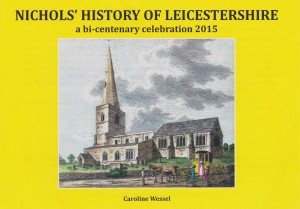
The publication compiled by Caroline Wessel to coincide with the bi-centenary of John Nichols’ History of Leicestershire
For two hundred years local historians have studied and rejoiced in the outsize tomes of John Nichols’ remarkable History of Leicestershire (1795-1815), assimilating and recording its huge volume of information on every aspect of the county’s history and antiquities. So a new full colour publication just launched by the Leicestershire Archaeological & Historical Society, entitled Nichols’ History of Leicestershire: a bi-centenary celebration 2015, is a timely and appropriate addition to the county’s literature in this significant Nichols bi-centenary year.
The publication, compiled and written by LAHS Vice Chairman Caroline Wessel, explores the remarkable lives, talents and achievements of three generations of the Nichols family and the literary and antiquarian world of London and Leicestershire they inhabited. Focussing on the extensive contents of Nichols’ History, a veritable treasure trove of information is uncovered, and a particular delight is the inclusion of original watercolours, engravings and sketches taken from John Nichols’ own copy of his History. Two chapters are written by Julian Pooley. Director of the Nichols Archive Project, that calendars around 14,000 Nichols family letters and journals housed in libraries worldwide.
The Herricks of Beaumanor shared an especially close friendship with the Nichols family. Chapter 5 on this Herrick friendship uses original letters between the families to describe J.Gough Nichols’ research for the Beaumanor armorial window and the Herrick American links, whilst the writer of a Nichols’ journal witnesses the present day Beaumanor in 1846 when it was only half built.
The ‘User’s Guide’ and ‘Who’s Who’ chapters are invaluable tools for the Nichols researcher, whilst a chapter by Record Office archivist, Robin Jenkins, and contributions from present-day Leicestershire people with specialist expertise, bring John Nichols’ concept of enlisting the local populace right up to date.
This highly readable book, with its evocative illustrations and gentle humour, is a must for historians, and for all those who love Leicestershire.
You can purchase your copy from Clarendon Books
144 Clarendon Park Road, Leicester LE2 3AE
Tel: 0116 270 1856 and 0116 270 1914
E-mail: clarendonbooks@aol.com
Clarendon Books welcomes personal callers, or you can obtain your copy from them by post, telephone or e-mail, using credit/debit card or cheque (cheques payable to Clarendon Books)
Price £9.95 or, if by post, £11.75 including postage/packing.
Books will also be on sale at the New Walk Museum, Jewry Wall Museum and Guildhall bookshops in Leicester, and at the Record Office, Beaumanor Hall and Hinckley Museum (open from Easter 2015)
The ‘Athletic Grounds’ of Loughborough
27 January 2015
- Barry displays a copy of ‘The Athletic Grounds of Loughborough’ at a history event in Queen’s Park, Loughborough.
- This photograph of the Loughborough Wednesday Football Club was taken at the Bromhead Ground on Nottingham Road, Loughborough. The houses in the background front onto Freehold Street.
- Soar Valley Cricket Club members of 1878.
Loughborough is known world-wide as a centre of sporting excellence through the University and its ability to produce sporting greats such as Robbie Brightwell, Dave Moorcroft, John Cooper, Andy Robinson, Bob Wilson, Tony Waiters, Sir Clive Woodward, Dario Gradi, Sir Sebastian Coe, Steve Backley and Paula Radcliffe.
However, a book by local resident Barry Wilford reveals that the town was active in the sporting world long before the University – previously Loughborough College – was established.
‘The Athletic Grounds of Loughborough’, published by Panda Eyes Press, documents the history of Loughborough’s sporting past and in particular of the Athletic Grounds on Nottingham Road, Leicestershire’s first enclosed sporting arena.
Opened in 1862 behind the Greyhound Hotel, the grounds hosted athletics meets, cycling, cricket, rifle shooting, musical concerts, an in-famous pig hunt and, most famously, football. It became the home of Loughborough Town Football Club and, later, Loughborough Corinthians, with matches staged there against many existing major league teams. The grounds closed in 1908 when the site was sold for development.
‘I became interested in the Athletic Grounds whilst looking through my late brother’s collection of postcards,’ Barry says. ‘I came across a photograph of Barrow Rising Star Football Team taken in 1904 and was intrigued to know where it was taken.’ A volunteer in Loughborough Library’s local studies room, Barry’s research kept growing until he realised he’d gathered enough material for a book. This was launched at last week’s Great War commemoration event in Queen’s Park.
With its insight into social life in Loughborough during the late 19th and early 20th centuries, Barry’s informative and amusing book has plenty to interest even those who don’t like sport. The two world wars get a mention, as does the brewery which once stood off Derby Road, the origins of Loughborough Library and Charnwood Museum, and the duties and benevolence of the town’s first mayor, Alderman Joseph Griggs.
Not to mention the story of how Loughborough Town FC beat Arsenal 8-0 in Loughborough!
You can read an article in the Leicester Mercury about Barry Wilford’s book here. Copies of ‘‘The Athletic Grounds of Loughborough’ are available from Waterstones, Loughborough, or by contacting Barry Wilford on 0784 953 8051.
The Politics of Food
20 January 2015
In March 2014, food historian and Labour Party Parliamentary Candidate for Loughborough Matthew O’Callaghan gave a non-political historical lecture at Loughborough University.
A regular food expert on BBC Television’s Great British Bake Off and other food programmes, Matthew spoke on the politics of good food, taking his audience on ‘a journey through food history with lessons for today’s politicians.’
He explained that food has been political from the very beginning of civilisation, with the geographical and social landscape of the world both being influenced by food.
The Politics of Food began with the hunter gathering food, which gave rise to the need for ‘the family’ – a community of individuals for which sufficient food had to be found for survival.
The next step was the organisation of society for the process of farming and the production of wheat and the introduction of irrigation to increase crop yield, all of which required a communal effort and cooperation.
Agriculture gave rise to landholding – the ownership of land and everything on it – to prevent people helping themselves to crops and benefiting from the hard work of others.
When more food could be grown that was needed to survive, a ruling class arose, which had time and money for leisure pursuits.
Matthew pointed out that migrants to Britain have always brought new foodstuffs with them and these in turn have influenced the diet of the entire population. The Roman invasions expanded the British culinary repertoire with food such as rabbit, apples and wine and put the good food onto the British cultural calendar.
The Germanic Angle and Saxon migrants and, later Normans added their own favoured foodstuffs to the British cuisine. In medieval times, crusading knights brought rare spices back from their travels, whilst the croissant, originally eaten in the Far East, came to Britain via Vienna and then France. The discovery of the New World brought potatoes and tomatoes to our diet.
Food has always been used as a tool of differentiation between the classes. In medieval times, noblemen sat at the high table eating venison whilst the lower ranks at the far end of the hall were given ‘umble pie’ – the guts or ‘umbles’, wrapped in a rough flour and water crust and cooked in the embers of the fire.
The belief that the purer the food the better saw those same noblemen eating refined, white bread whilst the poor ate gritty but fibre-rich rye. Sugar in Elizabethan times was worth more than gold and kept locked away in a safe, with the blackened teeth that resulted from eating it seen as a status symbol. The scourge of slavery was as much fuelled by the highly profitable demand for sugar as it was for cotton.
Later, the Melton Mowbray pie came into being as a means of feeding the rich hunting classes, with its hot-water-crust pastry robust enough to withstand being carried cross-country on horseback. It stands as a classic example of a good food unique to its use and its area of production.
The development of the coaching trade and improvement in transport systems spread the fame of regional foods and supported their distribution around the country. As demand for particular foods outstripped supply, farmers and food producers worked co-operatively to fulfill demand. Many of these organisations became models of the democratic principles of fairness and equality for all.
The exodus of people from country to towns in the industrial revolution changed food production forever and weakened links with regional food. Local recipes were changed to make them easier to mass produce and farming techniques were devised to grow crops on a larger scale. Food shortages during emergencies such as the two world wars resulted in the introduction of national styles of basic food stuffs such as bread and cheese.
Food production in Britain hit an all-time low in the 1890s, with food adulteration scandals, poor trading standards and the pollution of farm produce a common occurrence.
Matthew brought his talk to a close by touching on the resurgence of interest in good quality food in UK and the renaissance in demand for regionally produced food. He then kindly shared samples of locally produced food – as Stilton cheese and Melton pies with the audience.
Discover more:
Read about Matthew’s recent role as Chairman of the British Pie Awards and discover more about the origins of Stilton cheese.
Battledress exhibition – Snibston Discovery Museum
14 January 2015
Wednesday 14th January 2015 to Tuesday 31st March 2015
Commemorating the Centenary of the First World War, Battledress explores the impact of the 1914-18 War on Women’s fashion.
Drawn from the Museum’s historic fashion collection, the exhibition contrasts the elaborate and restricting fashions of the Edwardian period with the more practical styles that were created as a result of the War and the revolution in fashion that followed during the 1920s.
Exhibitions – Included in the admission price located within the museum (during normal opening hours) . See here for further information.
Leicestershire Green Plaque Awards Scheme
13 January 2015
Recognising and celebrating the cultural and historic heritage of Leicestershire
Nominations are open for the 2015 Leicestershire Green Plaque Award scheme.
After a successful opening year which saw five individuals and one organisation commemorated with a Green Plaque, Leicestershire County Council are again asking the local heritage community and members of the public to nominate people and places they think deserve recognition in this way.
Nominations can be for war heroes, local heroes and famous people, philanthropists and entrepreneurs, as well as places with cultural or heritage connections and buildings of historic or architectural importance.
Individuals commemorated with Green Plaques must have been deceased for at least 20 years, and both people and places must be in the county of Leicestershire, excluding Leicester City.
The closing date for nominations is Friday 23rd January 2015 and the shortlist of finalists will be announced in February 2015.
Nominations can be made online at or by picking up a form at your local library.
Details of the scheme, including events to honour the finalists from 2014, can be found at http://www.leics.gov.uk/greenplaques.
Further information can be obtained from Karen Wilde, Heritage Development Officer, on 0116 305 4112 or by email at karen.wilde@leics.gov.uk.
High N0741 Green Plaque Nomination Poster 1
LHHN website launch
8 January 2015
The Loughborough History and Heritage Network website was officially launched at Loughborough University on Thursday 18th December 2014. The well-attended meeting included members of the public and the local heritage community, Nicky Morgan MP and Vice-Chancellor Bob Allison.
Dr Robert Knight (Department of Politics, History and International Relations) started by thanking the Higher Education Innovation Fund, and all those who had contributed to the site. He stressed that the website is a work in progress, which depends on contributions and suggestions from members of the public. This community involvement also reflects one of the University’s research priorities – Communication, Culture and Citizenship.
Professor Allison welcomed the initiative as a valuable example of collaboration between the university and the local community. The website was formally launched by the Rt. Hon Nicky Morgan MP, who spoke of the importance of every community appreciating their heritage and the fascination of Loughborough’s history.
Alison Mott then shared her memories of the late Dr Ian Keil, who as lecturer in the Department of Economics had made an enormous contribution to the study of Charnwood’s history. His ideas and philosophy inspired the idea of the website.
Karen Ette followed with a highly topical talk based on her PhD research into a First World War encounter between Charles Elliott, an officer of the Royal Leicestershire Regiment, and the German writer Ernst Jünger. Finally Dr Jill Vincent, former Mayor of Loughborough and a retired university lecturer, talked about the role of First World War remembrance, the poppies at the Tower of London and the shared memories which unite a community.
